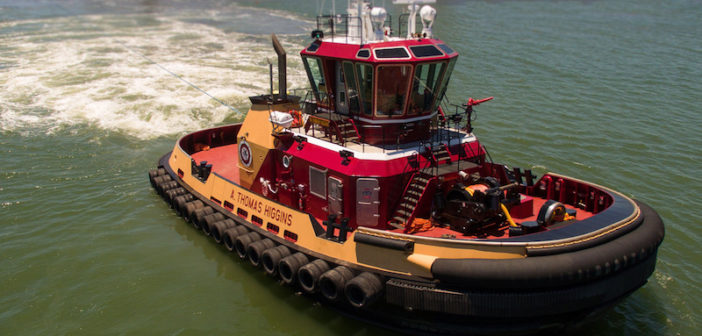As one of the largest, most widely known naval architecture and marine engineering firms in the world — celebrating its 90th anniversary in 2020 — Robert Allan Ltd. is no stranger to being approached by marine engine manufacturers seeking input on their products. But no one’s ever come to the Vancouver, Canada-based company as early in the process as Caterpillar did during the development of its U.S. Environmental Protection Agency (EPA) Tier 4 Final solutions.
Like many in the industry, the team at Robert Allan Ltd. was nervous about what meeting marine Tier 4 final emission regulations might mean for vessel designs with respect to the size of the engine and placement of auxiliary equipment. Though the company designs vessels of all types, it focuses primarily on tugboats and workboats, where space onboard often is at a premium.
“There were a lot of unknowns,” said Allan Turner, P.Eng, project manager and mechanical engineer at Robert Allan Ltd. “We understood that SCR [selective catalytic reduction] was going to be the technology utilized, and there was a concern that it was going to involve very large equipment that would have significant design impacts on a tugboat.”
So when the Caterpillar Marine team asked for Robert Allan Ltd.’s support in the development of the Tier 4 Final solution — part of a worldwide “listening tour” that took Caterpillar engineers aboard more than 50 vessels and into dozens of shipyards — Turner and his colleagues jumped at the opportunity.
Caterpillar provided a number of engines featuring SCR that had been used in other industries, and the Robert Allan Ltd. team began working to apply them to standard tugboat designs — eventually developing a drawing package for Caterpillar that illustrated the fit of the engines.
“When Caterpillar came to visit, we reviewed these drawings and also went aboard some tugboats in the Vancouver harbor to show them the space constraints,” Turner said. “The biggest takeaway was discovering the advantage of having the SCR equipment and the mixing tube combined in a single unit, and the ability of that unit to make either a 90° or 180° turn so it could be easily arranged in the vessel.”
It was during this visit that Caterpillar engineers sketched out an idea on a napkin that eventually evolved into the final engine design. When those engines were unveiled in 2014 — the first to market certified to U.S. EPA Tier 4 Final standards — Turner was pleased to see much of Robert Allan Ltd.’s feedback incorporated in the final design. Six years on, he’s been pleased with the application in the real world, too. Robert Allan Ltd. has designed approximately 40 vessels featuring Cat marine Tier 4 Final/ IMO Tier III engines to date. “From a design perspective, the Caterpillar SCR solution has held up quite well,” Turner said.



.JPG.small.400x400.jpg)

